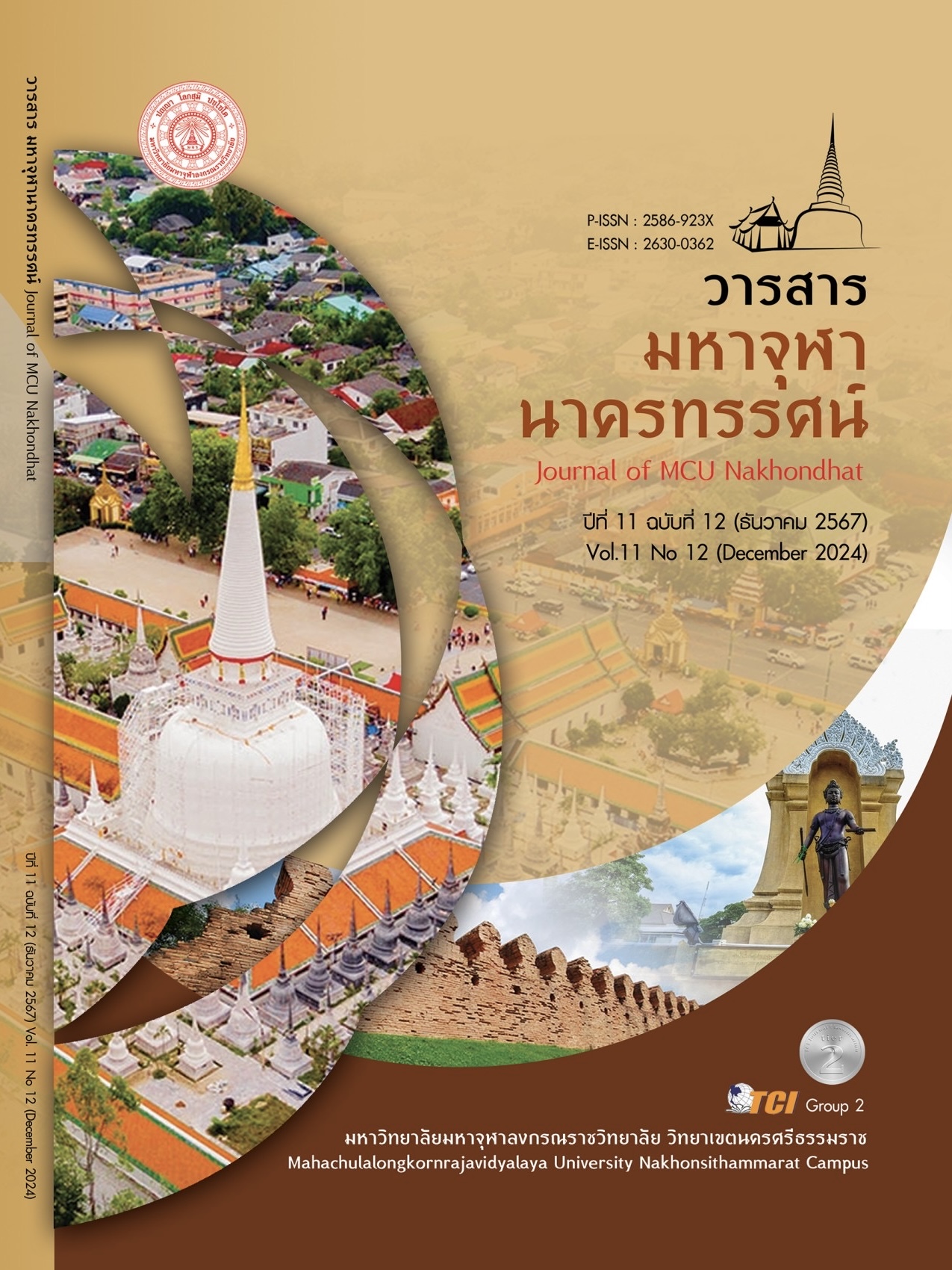DEVELOPMENT OF DESIGN-BASED AND PROJECT-BASED LEARNING MANAGEMENT MODELS TO ENHANCE PROBLEM SOLVING SKILLS OF PRATHOMSUKSA 6 STUDENTS
Main Article Content
Abstract
The research objectives were to 1) Study the design and project-based learning management model to enhance the problem-solving skills of Grade 6 students. 2) Develop a design-based and project-based learning management model to enhance the problem - solving skills of 6th grade students and 3) Evaluate the effectiveness of design and project-based learning management models. This research is research and development. The target group is 30 Grade 6 students at Ban Khlong Mai Daeng School. The data was using a data recording form. Student interview form Problem - solving skills assessment Academic achievement test and student satisfaction assessment form. The statistics used in this research are content analysis, mean, standard deviation, and t-test The results of the research found that the learning model based on design thinking and project-based processes to enhance the problem-solving skills of Grade 6 students has 3 steps as follows: Step 1: Creating understanding and creativity. Step 2: reflection and step 3: dissemination of the work. The academic achievement test shows the mean of the posttest of ( = 25.77, S.D. = 1.33) was higher than the pretest (
= 22.03, S.D. = 1.13) and the difference was statistically significant at the .05 level. The results of the evaluation of problem - solving skills were at an excellent level. and were most satisfied with the learning model based on design thinking and project-based processes to enhance the problem-solving skills of Grade 6 students (
= 4.50, S.D. = 0.51)
Article Details

This work is licensed under a Creative Commons Attribution-NonCommercial-NoDerivatives 4.0 International License.
References
กระทรวงศึกษาธิการ. (2565). รายงานผลการทดสอบทางการศึกษาระดับชาติขั้นพื้นฐาน (O-NET) ปีการศึกษา 2564 . กรุงเทพมหานคร: อักษรไทย (น.ส.พ.ฟ้าเมืองไทย).
ดนุพล สืบสำราญและอาภัสรา เพียงตา. (2565). การพัฒนาผลสัมฤทธิ์ทางการเรียนวิทยาศาสตร์เรื่องการแยกสาร โดยใช้เทคนิคเกมมิฟิเคชัน ของนักเรียนชั้นมัธยมศึกษาปีที่ 2 โรงเรียนราษีไศล จังหวัดศรีสะเกษ. วารสารวิชาการและวิจัยมหาวิทยาลัยภาคตะวันออกเฉียงเหนือ, 12(4), 86-98.
ดุษฎี โยเหลาและคณะ. (2557). การศึกษาการจัดการเรียนรู้แบบ PBL ที่ได้จากโครงการสร้างชุดความรู้เพื่อ สร้างเสริมทักษะแห่งศตวรรษที่ 21 ของเด็กและเยาวชน: จากประสบการณ์ความสําเร็จของโรงเรียนไทย. กรุงเทพมหานคร: หจก.ทิพยวิสุทธ.
ปวริศร ภูมิสูง. (2564). การพัฒนาการคิดเชิงออกแบบของนักเรียนชั้นมัธยมศึกษาปีที่ 4 ที่ได้รับการจัดการเรียนรู้ตามแนวทางสตีมศึกษา. วารสารการบริหารและนิเทศการศึกษา, 12(3), 204-215.
มานิตย์ อาษานอก. (2561). การบูรณาการกระบวนการคิดเชิงออกแบบ เพื่อพัฒนานวัตกรรมการจัดการเรียนรู้. วารสารเทคโนโลยีและสื่อสารการศึกษา, 1(1), 6-12 .
ฤทธิไกร ไชยงาม. (2562). มาตรวัดเจตคติแบบลิเคิร์ท (Likert rating scales). เรียกใช้เมื่อ 6 ธันวาคม 2567 จาก https://www.gotoknow.org/posts/659229
ศูนย์ดำเนินงาน PISA แห่งชาติ สถาบันส่งเสริมการสอนวิทยาศาสตร์และเทคโนโลยี. (2561). การแก้ปัญหาแบบร่วมมือ (Collaborative Problem Solving) บทสรุปสำหรับผู้บริหาร. เรียกใช้เมื่อ 20 กุมภาพันธ์ 2565 จาก https://pisathailand.ipst.ac.th/pisa2015-cps-summary/
สายชล สุกร. (2562). การพัฒนาทักษะการแก้ปัญหาแบบร่วมมือของนักเรียน ชั้นมัธยมศึกษาปีที่ 6 ด้วยการจัดการเรียนรู้ตามแนวคิดสะเต็มศึกษาโดยใช้ปัญหาเป็นฐาน เรื่องพอลิเมอร์. วารสารศึกษาศาสตร์, 30(2), 166-181.
สำนักงานเลขาธิการสภาการศึกษา. (2560). แผนการศึกษาแห่งชาติ พ.ศ. 2560 - 2579. (พิมพ์ครั้งที่ 1). กรุงเทพมหานคร: พริกหวานกราฟฟิค จำกัด.
Kathryn Boddie. (2023). Polya's Problem Solving Process. Retrieved january 5, 2024, from https://study.com/academy/lesson/polyas-four-step-problem-solving-process.html


